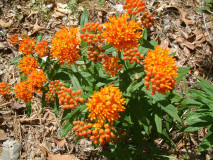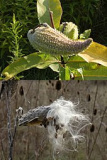- Store
- >
- Medicinal Plants
- >
- 1 g. Butterfly Milkweed seeds, Asclepias tuberosa, Monarch flower
1 g. Butterfly Milkweed seeds, Asclepias tuberosa, Monarch flower
Milkweed is the exclusive food of the endangered Monarch butterfly. Without milkweed, the Monarchs will die.
The large flower can vary in color from nearly white to deep pink-purple. The fragrance is very delicate and pleasing and numerous native pollinators will benefit during its long bloom time.
Milkweeds use three primary defenses to limit damage caused by caterpillars: hairs on the leaves, cardenolide toxins, and latex fluids. Data from a DNA study indicate that more recently evolved milkweed species use these preventative strategies less but grow faster than older species, potentially regrowing faster than caterpillars can consume them. This is an intelligent evolution of the plant.
Milkweed numbers have been in dramatic decline in recent years, due in part to suburban development and the increased efficiency of herbicides. It spreads readily by seed and underground rhizomes and its taproot can withstand drought. Common Milkweed is one of the easiest and fastest to establish of the Milkweeds and planting more, even in small urban pockets, can provide personal satisfaction while helping to counter increasing threats to our Monarch butterfly population.
Plant seeds late fall or early spring, no more than 1/4" deep, on a fairly weed-free site. Drought tolerant once established.
Milkweed fibers have many uses. Over 100 seeds per gram.







